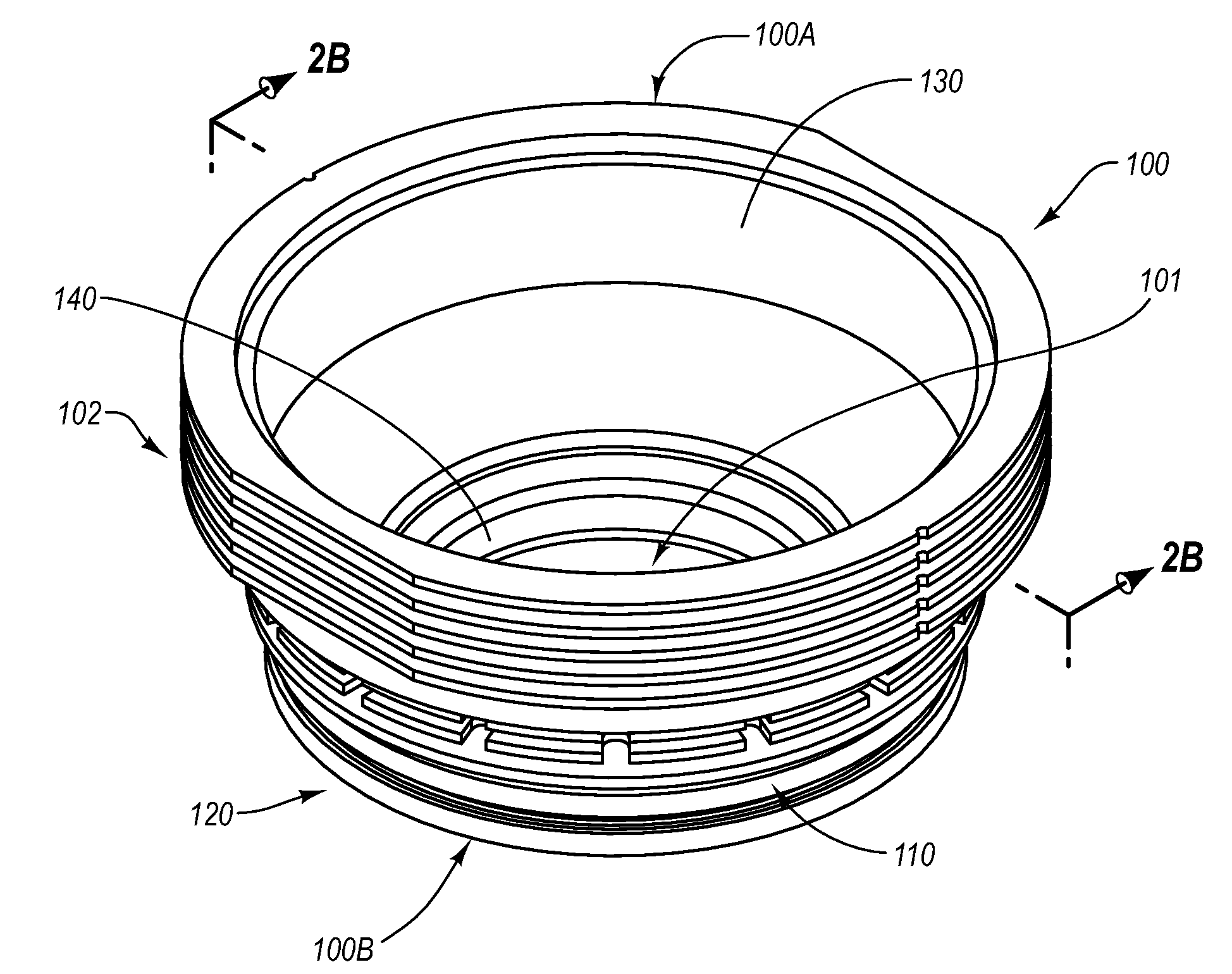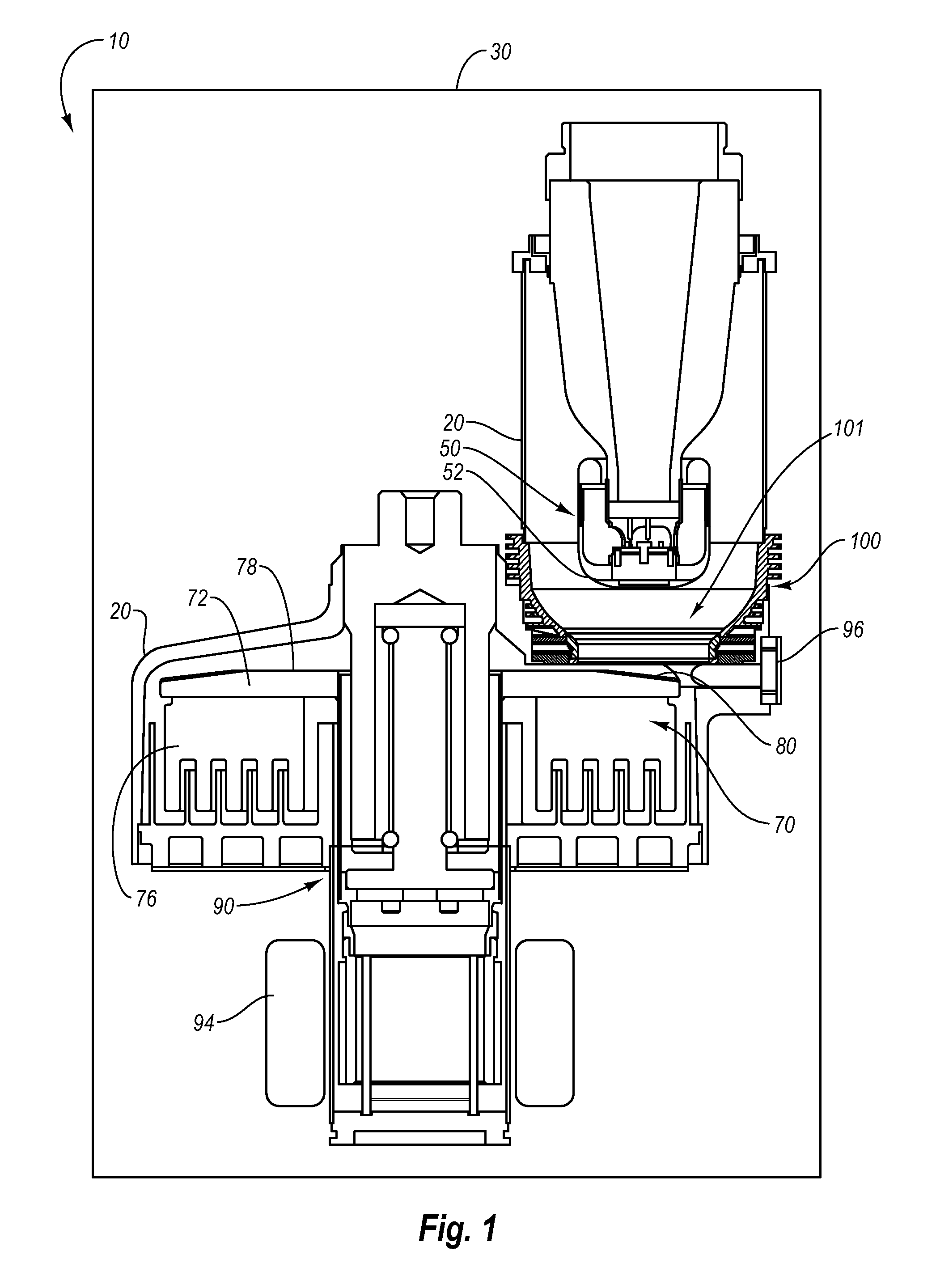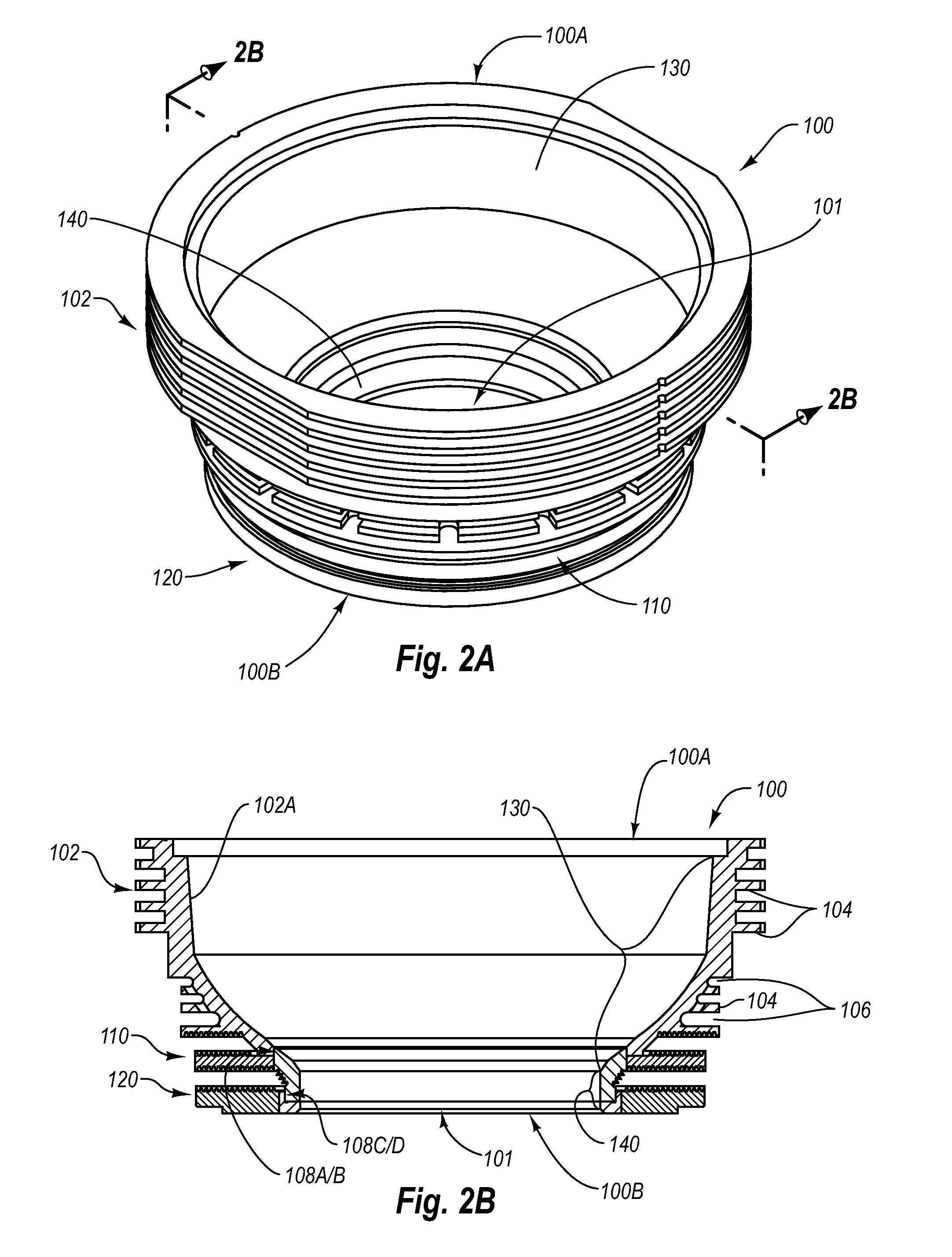Aperture shield incorporating refractory materials
a technology of refractory materials and aperture shields, applied in the field of electron shields, can solve the problems of large localized electron shield heating around the aperture throat, affecting the efficiency of electron shields, and causing “off-focus” x-rays, etc., and achieve the effect of reducing the incidence of failure of electron shields
- Summary
- Abstract
- Description
- Claims
- Application Information
AI Technical Summary
Benefits of technology
Problems solved by technology
Method used
Image
Examples
Embodiment Construction
[0026]Reference will now be made to figures wherein like structures will be provided with like reference designations. It is understood that the drawings are diagrammatic and schematic representations of exemplary embodiments of the invention, and are not limiting of the present invention nor are they necessarily drawn to scale.
[0027]FIGS. 1-4B depict various features of embodiments of the present invention, which is generally directed to an electron shield for interposition between an electron emitter and an anode configured to receive the emitted electrons, such as in an x-ray tube. Advantageously, the electron shield disclosed in example embodiments of the present invention is configured to withstand the elevated temperature produced by electrons backscattered from the anode and incident on selected portions of the electron shield. This in turn equates to a reduced incidence of failure in the electron shield and in the vacuum envelope, or evacuated enclosure, that it partially de...
PUM
| Property | Measurement | Unit |
|---|---|---|
| yield strength | aaaaa | aaaaa |
| yield strength | aaaaa | aaaaa |
| refractory | aaaaa | aaaaa |
Abstract
Description
Claims
Application Information
 Login to View More
Login to View More - R&D
- Intellectual Property
- Life Sciences
- Materials
- Tech Scout
- Unparalleled Data Quality
- Higher Quality Content
- 60% Fewer Hallucinations
Browse by: Latest US Patents, China's latest patents, Technical Efficacy Thesaurus, Application Domain, Technology Topic, Popular Technical Reports.
© 2025 PatSnap. All rights reserved.Legal|Privacy policy|Modern Slavery Act Transparency Statement|Sitemap|About US| Contact US: help@patsnap.com



